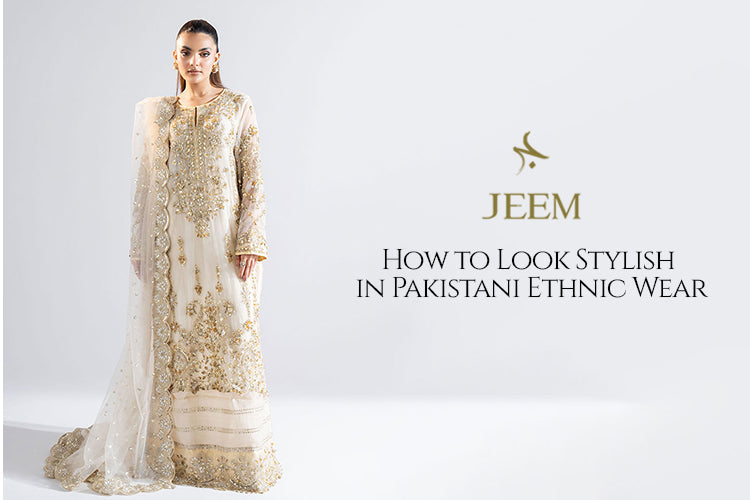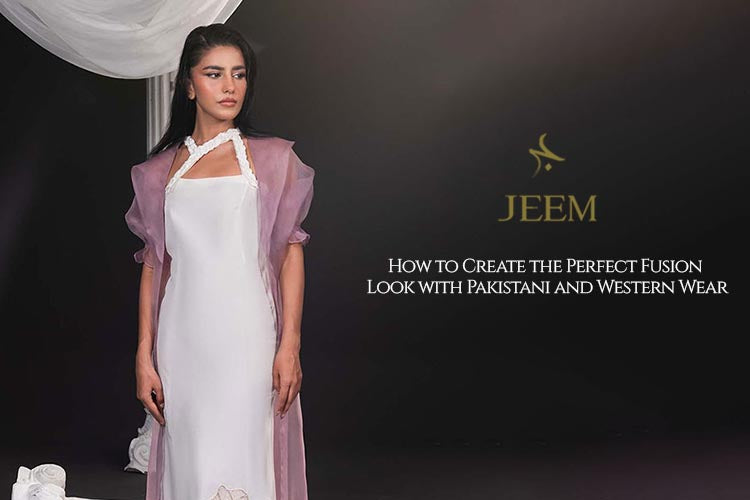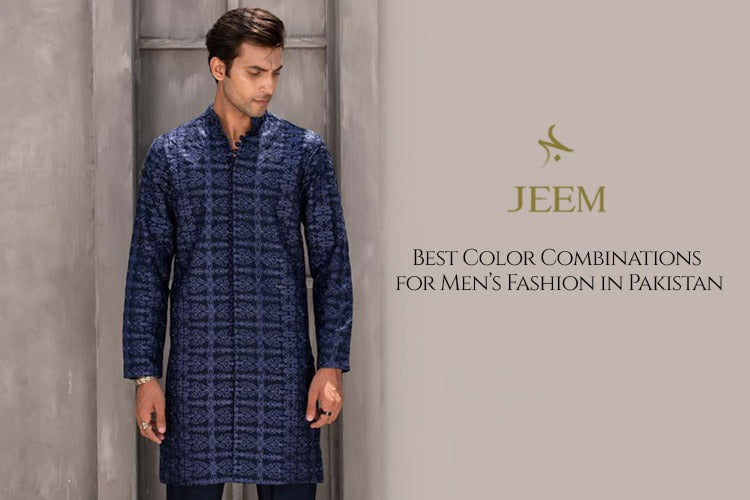
How to Look Stylish in Pakistani Ethnic Wear
Pakistani ethnic clothing is a vibrant representation of the country's rich cultural legacy and handicrafts. These clothes have hundreds of years of history. They have intricate designs and vibrant colours. They reflect Pakistan's diverse regions and communities. The most significant ethnic clothing from Pakistan is the Sherwani, Anarkali Suit, Lehenga Choli, and Shalwar Kameez. Ready-to-wear dresses provides a unique fusion of grace and heritage. These clothes represent cultural pride. They value fashion and artistic expression as well.
Styling is crucial. It enhances the garments' beauty. Wearing them with confidence and grace ensures their elegance. Proper styling can make an outfit trendy, not traditional. It lets people express their personalities while honouring their heritage. Careful fabrics, colours, and accessory styling make traditional wear both timeless and modern.
Popular Fabrics for Pakistani Ethnic Wear
The texture and shine of silk make it an opulent and graceful fabric. It is a sought-after option for formal occasions because of its graceful cascades. The richness and sheen of the fabric enhance the detailed needlework. Silk dresses for women are widely liked in Pakistan as formal and semi-formal attire.
Breathable and multipurpose is cotton fabric. It looks fantastic on casual, daily wear. It is comfortable and light. Therefore, in the warmer months, it's ideal for the Shalwar Kameez.
Lightweight and sheer, chiffon is a fabric type. It is renowned for its delicate, flowing quality. Chiffon gives movement and grace. It works well for events during the day as well.
Velvet is a rich, luxurious fabric. Its unique texture adds depth to traditional wear. It's ideal for cooler weather and formal events. It provides warmth and a classy look.
How to Select Fabric Based on Occasion and Season
With different seasons, clothing is the first thing that changes, and so are occasions. People wear light clothes during summer and heavy clothes in winter. The colour, fabric, print, and style all matter. And all changes with every new season and every new year. Women's festive dresses are also designed according to events and functions.
Occasion
Opt for luxurious fabrics like silk or velvet for weddings and formal events. These fabrics are perfect for creating a grand and elegant appearance. Choose fabrics with fancy embroidery to match the occasion's formality.
For informal occasions, cotton and chiffon are best. These fabrics offer comfort and ease while maintaining a stylish look. They provide versatility for both casual and formal daytime occasions.
Season
For warm weather in summer and spring, use lightweight, breathable fabrics like cotton and chiffon. They keep you cool and comfortable while allowing for fluid and airy designs.
Use heavier fabrics like velvet and silk in winter and fall in cooler weather. They add warmth and a rich texture. They suit the season's style. So, they are perfect for winter weddings and festive gatherings.
The suitable fabric improves your ethnic wear's look. It also ensures comfort and suits the occasion and weather. The luxury pret dresses for women are mostly made of light fabrics but can be worn with shawls or jackets.
Classic Colours for Pakistani Ethnic Wear
Colours tell a lot about your personality and mood, so wearing a particular colour radiates many kinds of energies, and one does not wanna radiate energy that he doesn't possess. There are also some specific trendy colours for summer and winter. They also help keep your body comfortable and easy.
Traditional Colours and Their Significance
- Red is associated with passion, love, and wealth. Thus, it's a well-liked option for celebrations like weddings. It represents contentment and luck.
- Green: This colour represents harmony, renewal, and freshness. On religious holidays like Eid, people dress in Sia Green Dress to symbolise rebirth.
- Blue: It stands for peace and profundity. This colour works well for both formal and semi-formal settings. It exudes grace and serenity.
-
Silver and gold are metallic colours commonly associated with extravagance and luxury. They decorate needlework and ornaments, adding a sophisticated refinement to traditional clothing.
Trendy Colour Combinations for Modern Looks
Pastels
Soft pastel colours like blush pink, mint green, and lavender are trending. Jeem Florence Green's dress is the perfect depiction. They create a contemporary and subtle look. They are modern yet elegant. So, they suit daytime events and casual gatherings.
Monochromatic Outfits
Wearing several tones of the same colour, such as green or blue, gives you a polished, cohesive appearance. This method might give your ensemble more depth and character.
Bold Contrasts
Pairing bold colours, like deep maroon, vibrant teal, or mustard and royal blue, creates a striking contrast. It stands out. This mix can modernise traditional wear and make a bold fashion statement.
Neutrals with Vibrant Accents
Use neutral colours, like beige or grey. Add bright pops of colour, like fuchsia or emerald green. This creates a balanced yet lively look like this Zoe pink dress. This approach is perfect for a stylish, chic look. It won't overwhelm the senses.
When choosing colours for Pakistani ethnic wear, consider the occasion and your style. Traditional colours hold heritage and cultural value. Modern combos allow for creative, fresh expression. Balancing these elements can help you achieve a stylish, polished look. It will reflect both tradition and modernity.
Embellishments and Accessories
A popular adornment for Pakistani cultural clothing is embroidery. It uses dexterous stitching to create exquisite motifs and patterns using threads, beads, and sequins. Among the many varieties of needlework are:
- Zardozi: Rich and ornate, often featuring gold or silver threads and elaborate patterns. It is commonly used in bridal and formal wear. For reference, you must look at this Mizaaj runway dress.
- Kundun utilises coloured threads and beads to create vibrant, textured designs. Often found in casual and festive attire.
-
Phulkari: A traditional Punjabi embroidery. It has floral patterns that add a folk touch to the outfit.
Sequins add sparkle to ethnic wear. They are perfect for evening events. These small, shiny discs are sewn onto fabric. They create a glittering effect that enhances the garment's appeal. Sequins stress specific areas of an outfit or envelop it completely.
Mirror Work Mirror work (or Shisha work) embeds small mirrors into the fabric. It creates a reflective, eye-catching effect.
Accessorising Your Outfit
Based on the outfit's formality, choose a style. Options include jhumkas, chandbalis, or danglers.
Statement necklaces or delicate chokers can elevate the look. For formal occasions, choose heavy, ornate pieces. For casual events, lighter, subtle designs are best.
Bangles add elegance and rhythm to your attire. Stack many bangles, or choose a single statement piece to enhance your outfit. Traditional metal bangles or embellished designs can add a touch of sophistication.
Shawls for women are also considered accessories since they are used for multiple purposes, such as covering up on streets, elevating styles, and adding more flare and contrast.
Care and Maintenance of Pakistani Ethnic Wear
Appropriate care is necessary because these dresses are of high value. These will be worn many times if cared for properly. Here are some tips to keep your fancy dresses from wearing out too quickly.
Washing Tips
- Hand wash most Pakistani ethnic clothing in cold water with a mild detergent, especially silk and chiffon items. In doing so, harm is avoided, and the fabric's quality is maintained.
- Velvet materials and clothing with delicate embellishments work best when dry-cleaned. It stops colour bleeding and helps preserve the quality of the needlework.
- Wear clothes immediately after soaking. It may deteriorate the cloth and lead to colour bleeds.
Storing Tips
- Use Garment Bags:
- Avoid Direct Sunlight
-
Store clothes in a well-ventilated area to prevent mustiness.
Handling Embellished and Delicate Fabrics
Gentle handling
Take caution while handling embroidered textiles to avoid snagging or harm. Steer clear of bulky accessories that might snag on the cloth. Use a delicate fabric and a mild cleaner to spot minor stains. Steer clear of solid chemicals since they can harm sensitive materials.
Professional Care
Consult professionals. For intricate embroidery or delicate fabrics, seek expert advice on cleaning and care. Correct handling of embellishments preserves the garment in a pristine state.
Conclusion
Maintaining the beauty of Pakistani ethnic wear involves careful handling and proper storage. Handle fabrics with care during washing to prevent damage. This will keep their elegance and make them last longer. Experiment with different styles and embellishments. Find what suits you best. Embrace the rich tradition of Pakistani fashion. Express your unique style. Enjoy the charm of your ethnic wardrobe.


